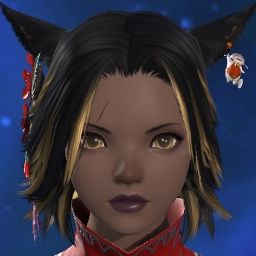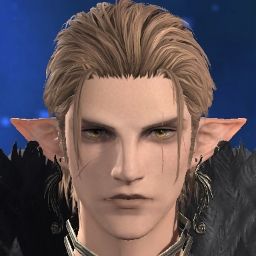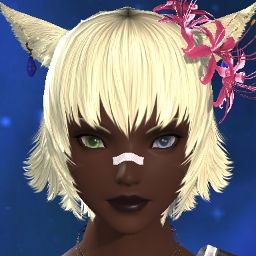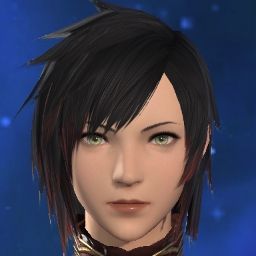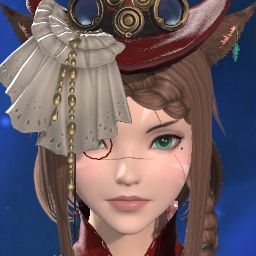Back in early HW, I did a lengthy writeup on something similar to your suggested control QoL updates, but I've long since lost it, so I'll just drop some highlights for now (see the expandable block below):
Core Additions -- for massive (if often unnecessary) QoL increase in terms of targeting:
Targeting Schema
A new system, Schema, has been introduced by which to far greater control whom an action should target. This works as a series of trickle-down priorities.
For instance, one could have an action most prefer their Current Target, if in range and applicable, but trickle down to their HUD Target (mouseover for a UI element), Field Target (mouseover for an on-field unit, rather than just UI), or Nearest Unit.
In total, options include Current Target, Focus Target, Previous Target, Target of Current Target, Target of Focus Target, Target of Previous Target, Camera Target (the target nearest to the center of your camera angle and in range), and Facing Target (target nearest player facing angle and in range).
One can set the Targeting Schema separately for each skill, for each instance of the skill once bound to a hotbar, and for general types of actions (such as ally-targeting or enemy-targeting skills or more specifically mitigation, etc.).
Dynamic Targeting
Players now have the option to use Dynamic Targeting.
While Dynamic Targeting is active, a target can be selected after selecting the action, allowing skills to highlight available and recommended targets -- thereby levying a variety of small QoL features.
To give time for this selection without delay, while Dynamic Targeting is active skills may be queued for activation at any time (rather than only in the last 0.5 seconds of the time before the given skill type may again be used), with conflicting orders preferring the most recent until the last 0.5 seconds. (These rules may be customized further for personal ease of use.)
For instance, upon pressing Icarus or Aetherial Manipulation, targeting reticules will appear around all applicable targets (party members in range), with unsafe targets (see the under-the-hood mechanic of Positional Snapping above) and those further from max range made more subtle. Similarly, Interject may highlight via targeting reticules only what enemies are currently casting an interruptible action.
When using a joystick, the target can be selected by nudging your targeting angle (via the direction in which the joystick is angled) and depth (via extent of joystick angle away from a neutral position) while the action is held. Additional options are available for cancelling any such action, including by swapping off of the chosen palette (using a different bumper, trigger, or combination thereof) or not pressing a second time, and to relative size of non-preferred targets, and what an ability considers a preferred target.
Listed as a sub-option for Dynamic Targeting, one may add a "Joystick Aim Starting Location" for a given skill as part of Schema, skill-specific or as a default, allowing the joystick movement to be done relative to a set target instead of the player themself.
Less Important Additions -- likely to be saved for normally hidden "Advanced Options":
Second Focus Target
One may now set a second Focus Target. This has the further option of Ward and Ware Targets, using the second Focus Target only if of a different type (friendly or hostile), allowing the two to share the same original Set Focus Target keybind. Keybinds added for Target Second Focus Target and Set Second Focus Target.
Moreover, the Focus Target and Current Target UIs can be stacked in customizable order alongside each other and, via a separate option, may be hidden or merged into the Current Target display when the two are the same, with or without a signifier that your Current Target is also your Focus or Second Focus Target.
Raise In Progress
Beginning a Raise action on an ally will immediately apply a buff on that ally displaying that they are in the process of being raised. Additionally, their health bar within the Party Frames or Alliance Raid Frames will be replaced with the remaining cast time on that raise.
Role Targets
In addition to targeting Player 1 to Player 8 within one's party, one may now target those of a specific role, Tank 1, Tank 2, Tank 3 (for ARs), Healer 1, Healer 2... Healer 6, and Damage 1, Damage 2... Damage 15.
These role orders can be set to ignore self, to set others in position 1, to set self in position 1, and to set whichever tank the original/primary boss is attacking as Tank 1 (if not self or including self). They can also be set conditionally to skip alive, dead, or dead-but-being-Raised members of the role.
:: Yes, these additional targeting options can also interact with Schema.
The general idea across these is that they allow players who might otherwise struggle to maintain full uptime or react with sufficient speed in scenarios that would oblige frequent target changes to much more nearly match the speed of more capable players (even after their having been likewise accelerated) while also giving general QoL to all, such as by allowing players to target in whatever way most makes sense to them. (While "Raise in Progress" might not appear to fit in with the other changes here, it interacts well with these added Role options, helping to pre-resolve who should Raise whom.)
A separate little addition I'd love to see:
Positional SnappingA new under-the-hood feature has been added, with two main features:
First, certain enemies, especially in encounters where the given enemy may create attacks or mechanics and predetermined areas, will now tend to snap to certain positions and angles, such as to the mechanical center of an encounter or to the room's cardinal angles (or certain other multiples of a given angle, based on room layout).
When an enemy "snaps" to a certain position, due to the feature above or in "jumping" to a particular location, the range from which it can be attacked and (for a briefer time) the range from which the enemy itself can attack are extended and the angles from which it can be struck in the Flank or Rear linger briefly, duplicating attempted positional attacks against the mob to be checked against both positions and taking the better of the two. This allows players to smoothly continue engaging and manipulating the mob despite this added QoL.
Second, when using a target-less gap-closing or gap-creating ability, the game will check for pathable terrain across the last 6 yalms distance and 3 yalms beyond your would-be destination. If any part of the ending distance is non-pathable (e.g., would go off a cliff) or endangered (e.g., within an AoE), the player's position will be snapped up to 5 meters back, but if there is safe and pathable terrain within fewer yalms further than one would otherwise be restrained, the max travel distance can instead be extended. Neither this extension or reduction can exceed 40% of the total normal distance to be travelled.__________________________Implication/Future Use: This would help to reconcile tank enemy-positioning agency with precise mechanical layouts, reducing the need to strip that agency from tanks. It also helps to resolve one of the largest problems existing bosses' instances of automatic repositioning cause for those with positional attacks, reducing the need to reduce or bypass positional elements in job kits.
For the second option, I'd like to start with just a few changes to future dungeons:
Background Changes:
- Not all casts require the mob to stop in place.
- The maximum average item level for dungeons will be only 10 higher than what that dungeon drops.
Additions:
Take any among these dozenish random mechanics to scatter across the "trash" of a dungeon...
- Mobs cleave with only a .2s indicator, following a named wind-up (~1s to ~2s long) usable while moving.
- Mobs may attack random players with linear, conal, or radial (circular, target-centered) AoEs.
- Mobs may enrage after a short telegraphing animation, jumping to and thereafter fixating on a random target (as displayed by a tether).
- Mobs may perform a repeated tethered chain of attacks, each applying vulnerability debuffs. If the tank takes all without an immunity, they'll quickly be wrecked.
- Mobs may have "Wild Charge"-like mechanics, on a vulnerable tank or on a random other player.
- Mobs have many more (interruptible) casts.
- Mobs have knockbacks.
- Mobs have draw-ins (that may purposely sync with self-centered AoEs and may therefore require separating the AoEing mob and the one drawing players in or a stun/silence for either if possible).
- Mobs' attacks may buff the mob for a couple seconds each time and to an indefinite number of maximum stacks, allowing them to continually increase in power until kited, stunned, or killed.
- Mobs may apply physical or magical vulnerabilities to the enemy.
- Mobs may gain additional strength or powers when another mob is killed.
- Mobs may heal selves or others, though in a manner limited by (stackable) self-buffs, a (hidden but) limited amount of MP, and/or by interruptible cast times.
- Mobs may summon additional mobs on cast or condition (including death).
- Mobs may slowly pursue their killers after death as difficult- or impossible-to-kill wraiths.
Implications/Future Use: Though individually small and isolated additions, their combination would give far more reason to utilize the more unique and "utility"-focused parts of our kits in dungeons, shake up the experience of healer and tank responsibilities, and extend damage-dealers' responsibilities.
-
09-02-2024 09:08 AM #11(3)
Last edited by Shurrikhan; 09-02-2024 at 05:37 PM.
-
09-02-2024 10:17 AM #12Player

- Join Date
- Dec 2014
- Location
- Gridania
- Posts
- 288
- Character
- Balmung Griffin
- World
- Sargatanas
- Main Class
- Dragoon Lv 100
And you know what's more infuriating?
This info about what relic weapon you've unlocked and what stage is already in place in game, because you can buy the Replicas that use this same info.
Do you know what's even crazier, they wouldn't even have to create test realms, because 90% of FFXIV content is instanced anyway.
One example is Island Sanctuary, they can create any rule inside that instance, and you just hop out and nowhere inside the regular game you can get any info of that specific instance unless you enter it again.(4)
-
09-02-2024 09:12 PM #13Player

- Join Date
- Mar 2016
- Posts
- 7,835
- Character
- Oscarlet Oirellain
- World
- Jenova
- Main Class
- Warrior Lv 100
SE has over 100 people across their Quality Assurance staff and they spend months finding bugs before the actual release of a major patch.
So from SE's perspective, test servers aren't needed.
However, finding bugs and finding "philosophical disagreements players have with the patch" are different things and I think public test servers allow the latter to be found.
Small MMOs probably do it so they don't have to pay for a large QA team like SE does.LOTRO is a small, ancient, niche MMO and even they have a test server where they roll out new features/instances/class changes/etc before they actually go live with them.(1)
-
09-02-2024 09:19 PM #14
Healers being able to contribute to fights in a meaningful way.
(1)
-
09-02-2024 10:24 PM #15Player
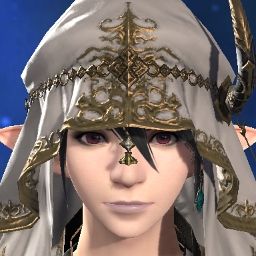
- Join Date
- Apr 2016
- Location
- Limsa Lominsa
- Posts
- 33
- Character
- Talamh Alainn
- World
- Balmung
- Main Class
- Paladin Lv 100
I want more Chocobo race Tracks.
It's been 3 tracks since forever.
Where's Round'the'Darvinia, or Up the down Sea of Clouds, or Thavnarian de Boko Marathon track.
And so on, and so on. And no Metallic Coloring for Bokos, are you mad? What about the renowned GOLD Chocobo?
I do, I do it every week for 5 rounds.
The Island Sanctuary... is such a disappointment. I kept pushing it off, but then I learned that you basically turn the whole thing into an industrial nightmare... uhm.. WHY.
It's a SANCTUARY, not the Warrior of Light's colonization program. Still barely touched it. All I wanted was a flat piece of land with a hammock.
Maybe gathering opportunities, but I sure as hell didn't want to build all the stuff it wants me to build..
That sounds interesting, like Duty with NPC except you always have one with you.
Though that sounds a bit like SWTOR..
Star Trek Online has it.
I presume WoW still does it ( I stopped playing over 10 years ago ).(3)=~=~=~=~=~=~=~=~=~=~=~=~=~=~=~=~=~=~=~=~=~
Ugh ..
-
09-02-2024 10:37 PM #16Player

- Join Date
- Oct 2018
- Posts
- 4,756
- Character
- Sunie Dakwhil
- World
- Twintania
- Main Class
- Machinist Lv 100
- Shifting normal Criterion away from ex difficulty and focusing on the difficulty level of their add phases, which are in my opinion perfectly approachable for the midcore audience the mod was supposed to reach, and could make for a form of "dailies" localized in time and patch schedule. But this would require to create 2 different versions of each boss for mechanics, so more resources and production time.
- Adding more variations in casual dungeons without necessarily breaking the general formula outright (time for completion, etc). Variations could entail: alternative paths (randomly chosen), more rng in trash, more rng in boss scripting, amount of bosses (brayflox?), elevator/train sections could be made use of more creatively as well, etc.(3)
-
09-02-2024 11:39 PM #17Player
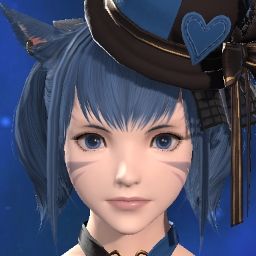
- Join Date
- May 2015
- Posts
- 749
- Character
- Saphir Amariyo
- World
- Brynhildr
- Main Class
- Thaumaturge Lv 40
An experimental area that tries to distance itself from scripted gameplay would be exciting to see. I'd like it to fit around normal class design as well, so no additions like duty actions or lost actions. Combat would be similar to what we're used to except that enemies would be less predictable and also react to what happens in the fight. A boss enemy could have some hidden attack resources and spend them in different ways each time it's encountered and if the party enters a state with low HP the boss could become more willing to spend resources on damage. That has the potential to create more demanding healing situations without resorting to instant death mechanics. Think of mini soft enrages that happen through out the fight if the right conditions are met. Tanks could also be given more opportunities to defend the party by being able to interfere with enemy attacks through their own abilities (Low Blow, Interject, etc). The effects of these abilities should be tuned to be less binary. Stun could be turned into a slow effect or modify the range of AoE attacks instead of completely incapacitating something.
Such an area would be a great place to test ideas for mid level difficulty that the game is missing and offer something different from scripted Extreme and Savage fights.(3)
-
09-03-2024 12:14 AM #18
They need to start moving back away from the current dungeon design. I know all the reasons but they went too far, 2 packs -> wall -> boss -> 2 packs -> wall -> boss is getting WAAAAAAAAY too routine. They sort of tried to do it a bit in Criterion but they need to start having more diverse dungeons, just add some Lost Ark style flavour of randomisation or choices.
(3)
-
09-03-2024 10:35 AM #19Player

- Join Date
- Sep 2023
- Posts
- 1,173
- Character
- Hallarem Aurealis
- World
- Omega
- Main Class
- Dragoon Lv 100
Incrementally adding more budget and staff into the game that earns them the most to secure it for the future, instead of tossing their money into other projects.
(5)
-
09-03-2024 12:47 PM #20
You know what we really need? Hairstyles linked to glamour plates! I’m an ingame coplay cat and I suffer, because I can’t have blue Hair for Aqua (KoNoSuBa), Orange for Futaba (Persona 5) and so on. It’s always my Aerith brown.
(4)



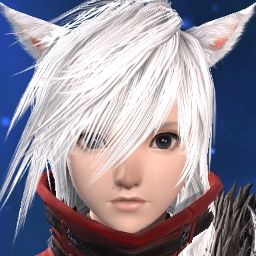

 Reply With Quote
Reply With Quote
